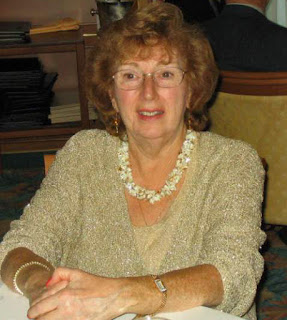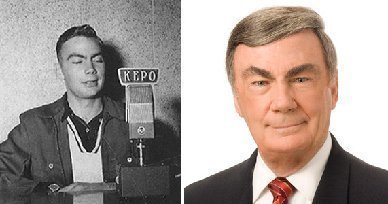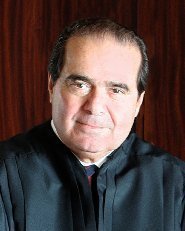Good 38º morning.
Yesterday we started at 48º. Then the rain started and we went down to 43º. It poured rain and poured rain!
Picture of the Day .... comfy lounging 😀
Interesting about Optometrists
Optometry is a specialized health care profession that involves examining the eyes and related structures for defects or abnormalities. Optometrists are health care professionals who typically provide comprehensive eye care.
In the United States and Canada, optometrists are those that hold a Doctor of Optometry degree. They are trained and licensed to practice medicine for eye related conditions, in addition to providing refractive (optical) eye care. In the United Kingdom, optometrists may also practice medicine (and provide refractive care) for eye related conditions. The Doctor of Optometry title can also be used in the UK for those that hold the postgraduate O.D. degree. Within their scope of practice, optometrists are considered physicians and bill medical insurance(s) (example: Medicare) accordingly. Moreover, many participate in academic research for eye-related conditions and diseases. Optometrists receive training in refraction and monitoring of common uncomplicated eye conditions. They are not trained in any forms of surgery or laser procedures. Ophthalmologists are medical doctors and surgeons who typically hold a four-year college degree, a four-year medical degree, and at least four years of residency training after medical school.
Etymology
The term "optometry" comes from the Greek words ὄψις (opsis; "view") and μέτρον (metron; "something used to measure", "measure", "rule"). The word entered the language when the instrument for measuring vision was called an optometer, (before the terms phoropter or refractor were used). The root word opto is a shortened form derived from the Greek word ophthalmos meaning, "eye." Like most healthcare professions, the education and certification of optometrists are regulated in most countries. Optometric professionals and optometry-related organizations interact with governmental agencies, other healthcare professionals, and the community to deliver eye and vision care.
Definition of optometry and optometrist
The World Council of Optometry, World Health Organization and about 75 optometry organizations from over 40 countries have adopted the following definition, to be used to describe optometry and optometrist.
Optometry is a healthcare profession that is autonomous, educated, and regulated (licensed/registered), and optometrists are the primary healthcare practitioners of the eye and visual system who provide comprehensive eye and vision care, which includes refraction and dispensing, detection/diagnosis and management of disease in the eye, and the rehabilitation of conditions of the visual system.
United States
Optometrists or Optometry Doctors usually function as primary eye care providers - they have a degree in eye care. They provide comprehensive optical and medical eye care, but usually not surgery. They are trained and licensed to practice medicine for eye related conditions - prescribe topical medications (prescription eye drops), oral medications as well as administer diagnostic agents. In some states, optometrists may also be licensed to perform certain types of eye surgery.
Education and Training
Optometrists typically complete four years of undergraduate studies followed by four years of Optometry school. Some complete a 5th year of training. Their program is highly specific to the eyes and related structures. Optometrists receive their medical eye training while enrolled in Optometry school and during internships. Training may take place in colleges of Optometry, hospitals, clinics and private practices. In many instances Optometry students and Ophthalmology residents will co-manage medical cases. Instructors may be Optometrists, professors or physicians. The program includes extensive classroom and clinical training in geometric, physical, physiological and ophthalmic optics, specialty contact lens evaluation, general anatomy, ocular anatomy, ocular disease, pharmacology, ocular pharmacology, neuroanatomy and neurophysiology of the visual system, pediatric visual development, gerontology, binocular vision, color vision, form, space, movement and vision perception, systemic disease, histology, microbiology, sensory and perceptual psychology, biochemistry, statistics and epidemiology.
Optometrists are required to obtain continuing education credit hours to maintain licensure - number of hours varies by state.
Optometrists prescribing schedule controlled substances are required to renew their DEA license every few years.
If you want to read a whole lot more, go here: https://en.wikipedia.org/wiki/Optometry
From Mr. Food
- SERVES
- 8
- COOK TIME
- 35 Min
This easy crust cheesecake will make you a baking maven in no time! Rich and creamy, and kissed with a citrus taste of Florida sunshine - it's a no-fuss fancy idea that they won't be able to wait to indulge in.
- 2 packages (8 ounces each) cream cheese, softened
- 3/4 cup sugar
- 2 eggs
- 3 tablespoons fresh orange juice
- 2 tablespoons fresh lemon juice
- Zest of one orange
- Zest of one lemon
- 1 (9-inch) graham cracker pie crust (see Tip)
- Preheat the oven to 350º.
- In a large bowl, beat the cream cheese, sugar, and eggs until well combined. Stir in the orange and lemon juices and zest. Mix until smooth then pour into the pie crust.
- Bake for 35 to 40 minutes, or until set. Remove from the oven and let cool. Cover and chill for at least 4 hours before serving.
Special birthday today... my travel pal from years back, Joan Petitclair is celebrating. HAPPY BIRTHDAY JOAN!
Historically this date.......
1956 – Joey Buttafuoco, American criminal
An interesting read about Buttafuoco, then click on his gf's name and read about Amy Fisher and what she became and then about his wife Amy shot, Mary Jo. Click on his name above and their links are on there.
later
All I know. Nuff said. Have a good Monday. Ciao.
xo Sue Mom Bobo
March 11th – On National Johnny Appleseed Day, we remember a man who made apple (and pear) trees bloom across the nation. The day celebrates a kindly legend who lived by sage teachings and labored to bring the shade of fruit trees across much of the United States.
John Chapman
He was born John Chapman on September 26, 1774, in Leominster, Massachusetts, to Nathaniel and Elizabeth Simons Chapman. Not much is known about his early life other than his mother died when he was two. His father packed up Johnny and his sister (an infant brother had died the previous year) and moved to Springfield, Massachusetts. His father served as a Minuteman and fought at Bunker Hill.
Then in 1797, Chapman shows up in northwestern Pennsylvania, propagating his apple seeds. He worked his way steadily into the frontier of West Virginia, Ohio, and Indiana. Eventually, Chapman became known as Johnny Appleseed and worked his way as far west as Illinois and Iowa and as far north as Michigan and Wisconsin.
In his wake, he left orchards and the teachings of Emanuel Swedenborg, a Swedish spiritual leader. Appleseed would buy his books with whatever payment he might receive for his endeavors. In turn, Johnny would give the books away as he traveled and planted.
Mostly, though, he planted his seeds and seedlings for free along with his wisdom, his broad-brimmed pasteboard hat keeping the sun from his eyes as he went. Often shoeless, he traveled mostly by foot and sometimes by horseback or canoe. His appearance was nearly as noteworthy as his accomplishments, but so was his kindness. Farmers and frontier folk always found a place at the table if Johnny Appleseed came visiting.
There are many stories told that the man would travel many miles to nurse an ailing orchard when word would reach him of its poor condition. Bringing the trees back to health would be his chief endeavor while dispersing wisdom, care, and kindness as he did.
Landmarks
Across the Midwest, landmarks pepper the countryside honoring the man that brought fruit to the frontier. Warren County, Pennsylvania, lays claim to Johnny Appleseed’s first tree nursery.
Mansfield, Ohio, honors the man with a monument in South Park. The last known Chapman tree still lives! In rural Ashland County, Ohio, the tree struggles to survive, but half of it still manages to bloom in the spring.
In his hometown of Springfield, Massachusetts, there is an entire park named after the man who nurtured the land and made apple trees bloom across a young nation.
Two dates celebrate Johnny Appleseed Day, either March 11th or September 26th. The September date is Appleseed’s acknowledged birth date. However, many people across the country prefer the March date due to the planting season. While some vagueness surrounds Appleseed’s death and burial, he became ill in early March and passed soon after. In Fort Wayne, Indiana, in Johnny Appleseed Park, a grave marks the spot where the legendary sower of apple seeds rests.









